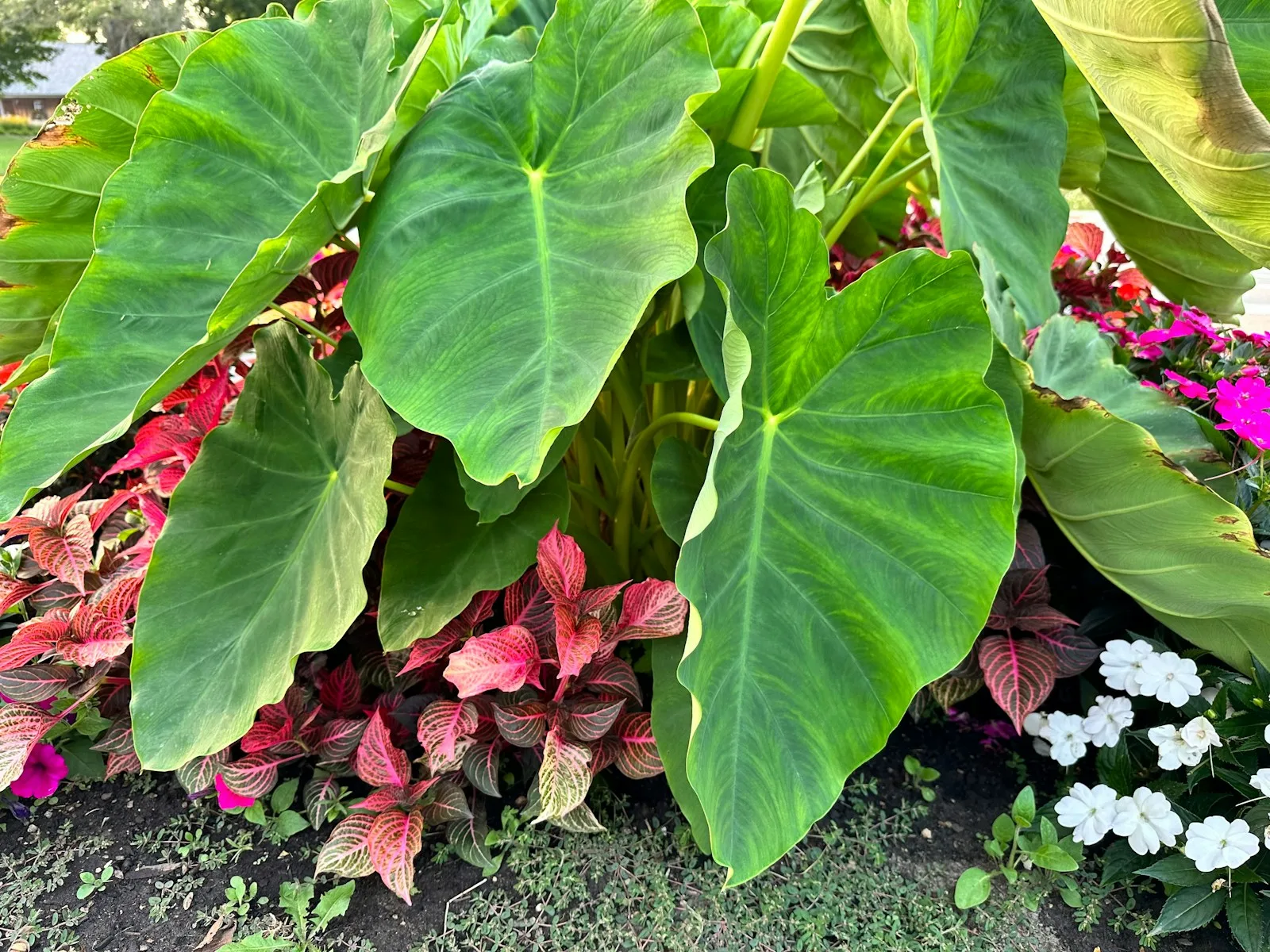Elephant ear plants are the bold statement-makers of the gardening world. With their massive, heart-shaped leaves and lush, tropical vibe, these plants are perfect for adding a dramatic touch to any space, whether outdoors or indoors. But like any superstar plant, elephant ears need the right care to thrive. In this guide, we’ll cover everything you need to know about elephant ear plant care, including proper feeding, winter tips, and whether they can flourish indoors.
About Elephant Ear Plants
Elephant ear plants belong to the genera Alocasia, Colocasia, and Xanthosoma. Native to tropical and subtropical regions, these plants are prized for their oversized foliage and versatility in the garden. Whether you’re growing them as garden showstoppers or houseplants, they demand attention with their bold, exotic look.
Where Can Elephant Ear Plants Grow? (Elephant Ear Plant Zone)
Elephant ear plants thrive in USDA hardiness zones 8–11, where temperatures remain warm year-round. In these zones, they can be grown outdoors as perennials. If you’re outside these zones, don’t worry—they can be grown as annuals or overwintered indoors.
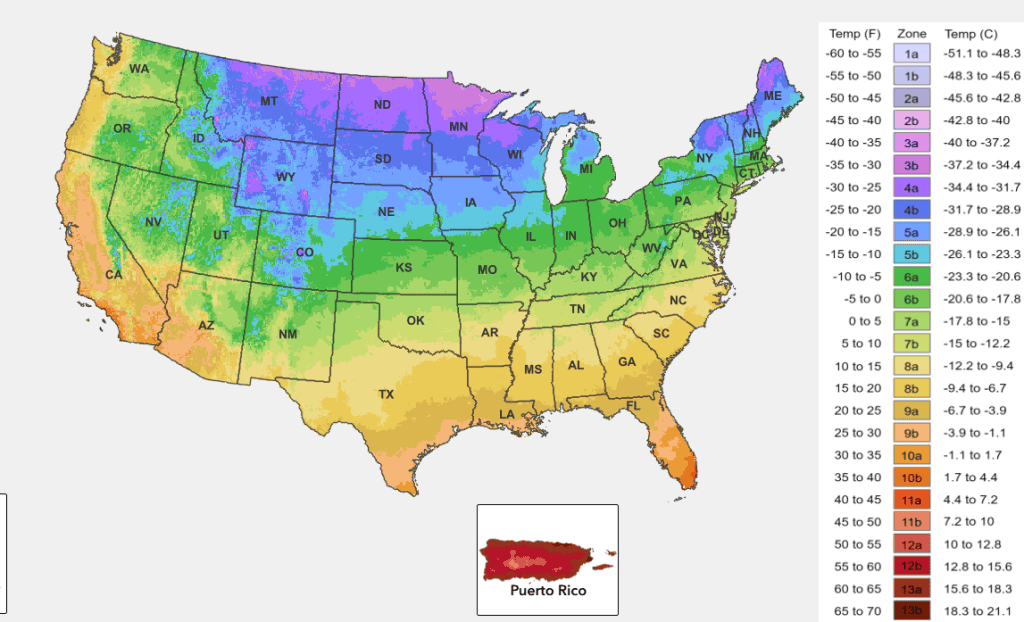
Zone Tips:
- Zones 10–11: Elephant ears grow year-round in these tropical and subtropical zones, thriving in full sun and warm conditions.
- Zones 8–9: These zones experience occasional frost. Mulch heavily or bring bulbs indoors during winter to protect the plants.
- Zones Below 8: Grow elephant ears as annuals or in containers that can be moved indoors during cold months. Start with a container that’s at least 18–24 inches in diameter and 12–18 inches deep for smaller varieties or young plants. For larger varieties, go for a 24–36 inch diameter pot and at least 18–24 inches deep to accommodate their substantial root systems and allow the plant to thrive.
How to Care for Elephant Ear Plants
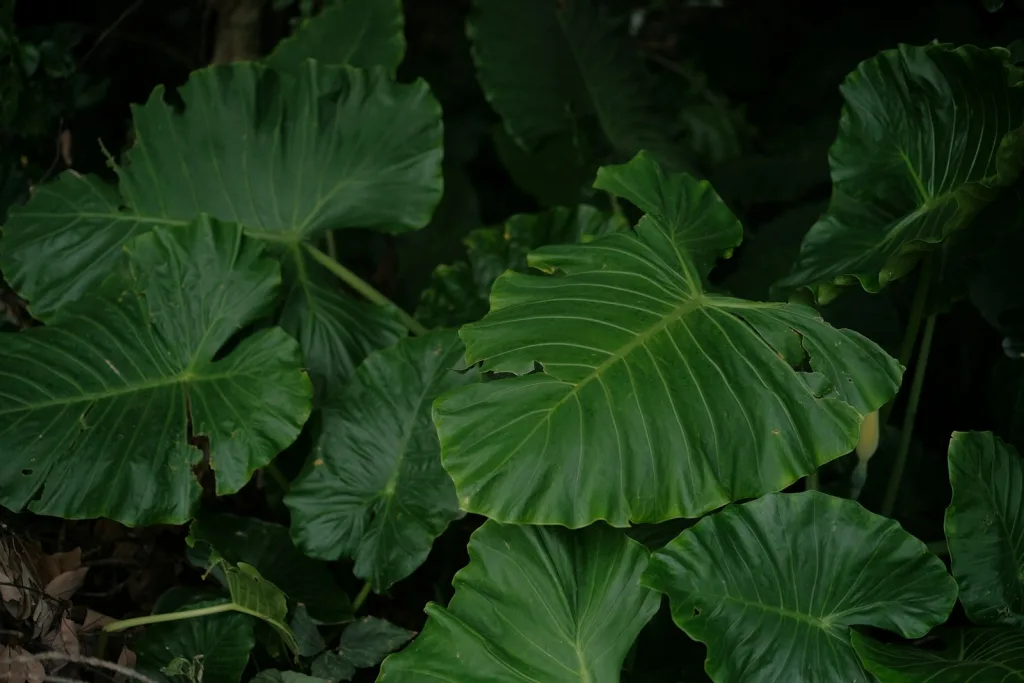
1. Light Requirements
- Outdoor Plants: Elephant ears prefer partial shade to full sun, depending on the variety. Some varieties, like Colocasia, tolerate more sun, while Alocasia often thrives in filtered light.
- Indoor Plants: Place elephant ears near a bright, indirect light source. Avoid direct sunlight, which can scorch their leaves indoors.
2. Watering
- Outdoors: Keep the soil consistently moist, as these plants love water. They’re even happy in soggy conditions, making them great for pond edges or rain gardens.
- Indoors: Water thoroughly but allow the top inch of soil to dry out between waterings to prevent root rot. Use a pot with drainage holes.
3. Soil Preferences
Elephant ears thrive in rich, well-draining soil. For container plants, use a potting mix that includes organic matter like compost or peat moss.
Feeding Your Elephant Ear Plant (Elephant Ear Plant Food)
These heavy feeders need regular nutrition to maintain their large leaves.
- What to Use: A balanced fertilizer or one high in nitrogen promotes lush foliage growth.
- How Often: Feed every 4–6 weeks during the growing season (spring through summer). For indoor plants, reduce feeding frequency in fall and winter.
- Organic Options: Compost tea or fish emulsion works well for outdoor plants.
Elephant Ear Indoor Plant Care
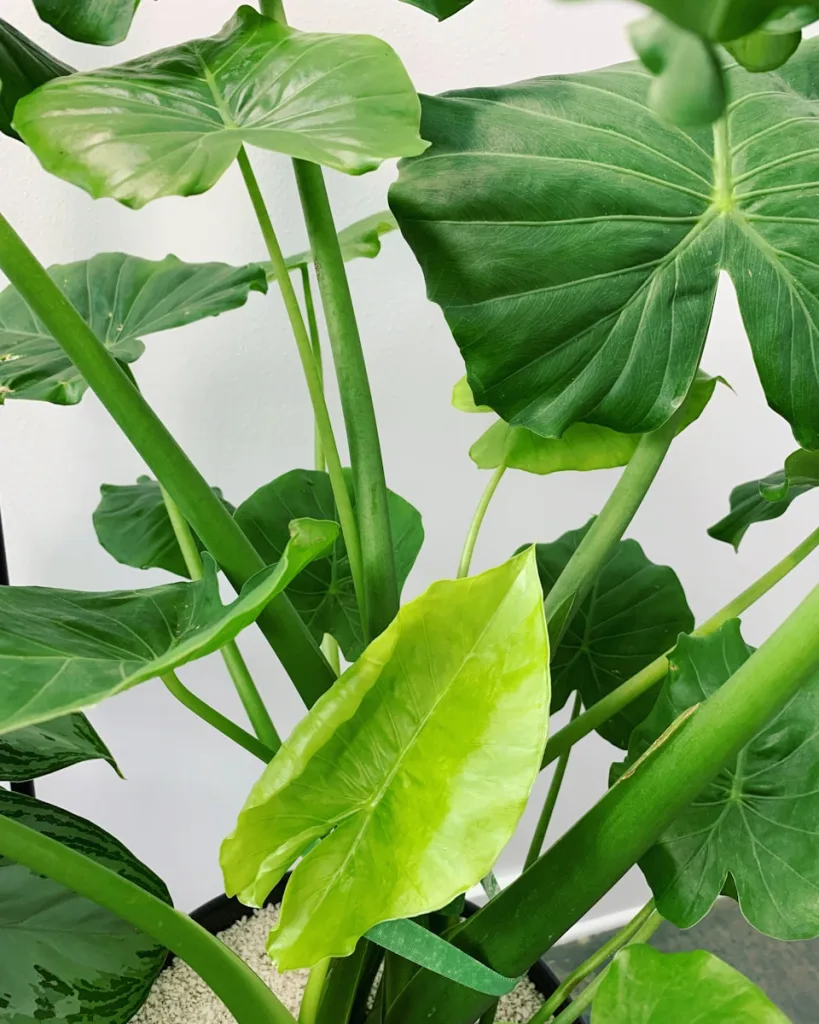
While elephant ear plants are typically grown outdoors, they make stunning houseplants if given the right conditions.
Tips for Growing Indoors:
- Light: Place in bright, indirect sunlight to mimic their natural habitat.
- Humidity: Elephant ears love high humidity. Use a pebble tray or humidifier to keep indoor air moist.
- Watering: Water regularly but don’t let the plant sit in soggy soil.
- Temperature: Keep the room between 65–75°F for optimal growth.
- Repotting: Repot every 1–2 years to refresh the soil and allow room for root growth.
Elephant Ear Plant Care in Winter
Elephant ear plants go dormant in cooler months, so their care needs change during winter.
For Outdoor Plants:
- In zones 8–9, cut back the foliage after the first frost and cover the soil with a thick layer of mulch to protect the tubers.
- In zones below 8, dig up the bulbs before the first frost. Let them dry, then store them in a cool, dry place (40–50°F).
For Indoor Plants:
- Reduce watering and stop fertilizing during the winter months when the plant’s growth slows.
- Keep the plant in a warm, humid environment to prevent stress.
Common Issues with Elephant Ear Plants
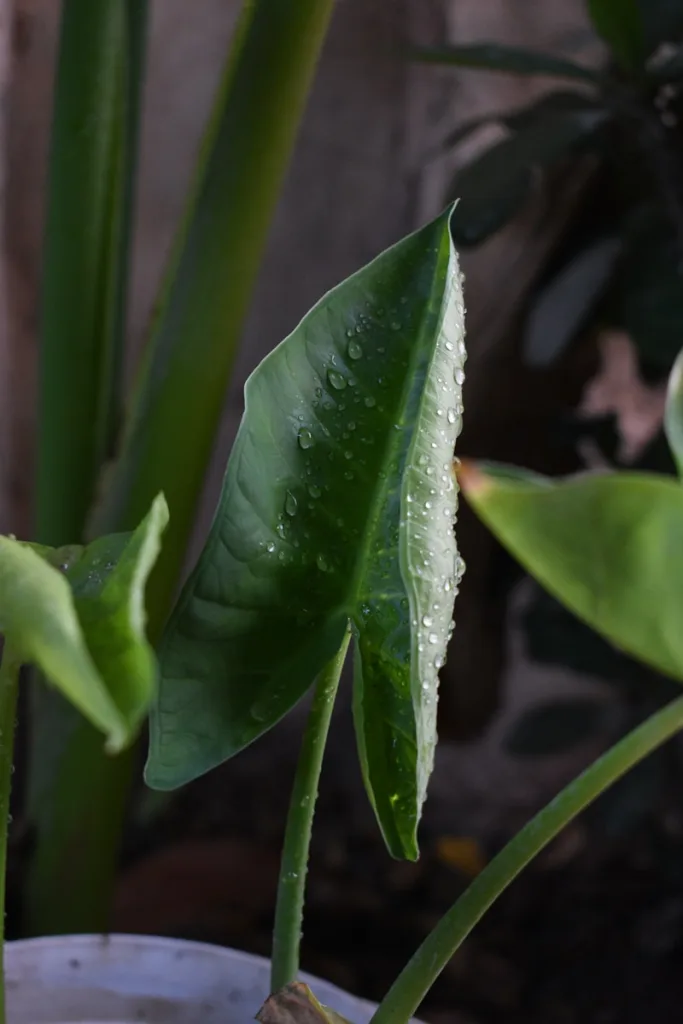
Even with proper care, elephant ears can run into a few problems. Here’s how to address them:
1. Yellowing Leaves
- Cause: Overwatering, underwatering, or nutrient deficiency.
- Solution: Adjust watering habits and feed with a balanced fertilizer.
2. Browning Edges
- Cause: Low humidity or inconsistent watering.
- Solution: Increase humidity indoors and maintain consistent soil moisture.
3. Pests
- Common Culprits: Spider mites, aphids, and mealybugs.
- Solution: Use insecticidal soap or neem oil to treat infestations.
Why Grow Elephant Ear Plants?
Elephant ear plants are more than just a pretty face. They’re versatile, adaptable, and bring a bold, tropical vibe to any space. Whether you’re filling out a garden bed, creating a focal point in your yard, or adding drama to your living room, these plants deliver. With the right care, they’ll reward you with lush, showstopping foliage year after year.
So grab your favorite variety, follow these tips, and let your elephant ear plants thrive in all their oversized glory!

